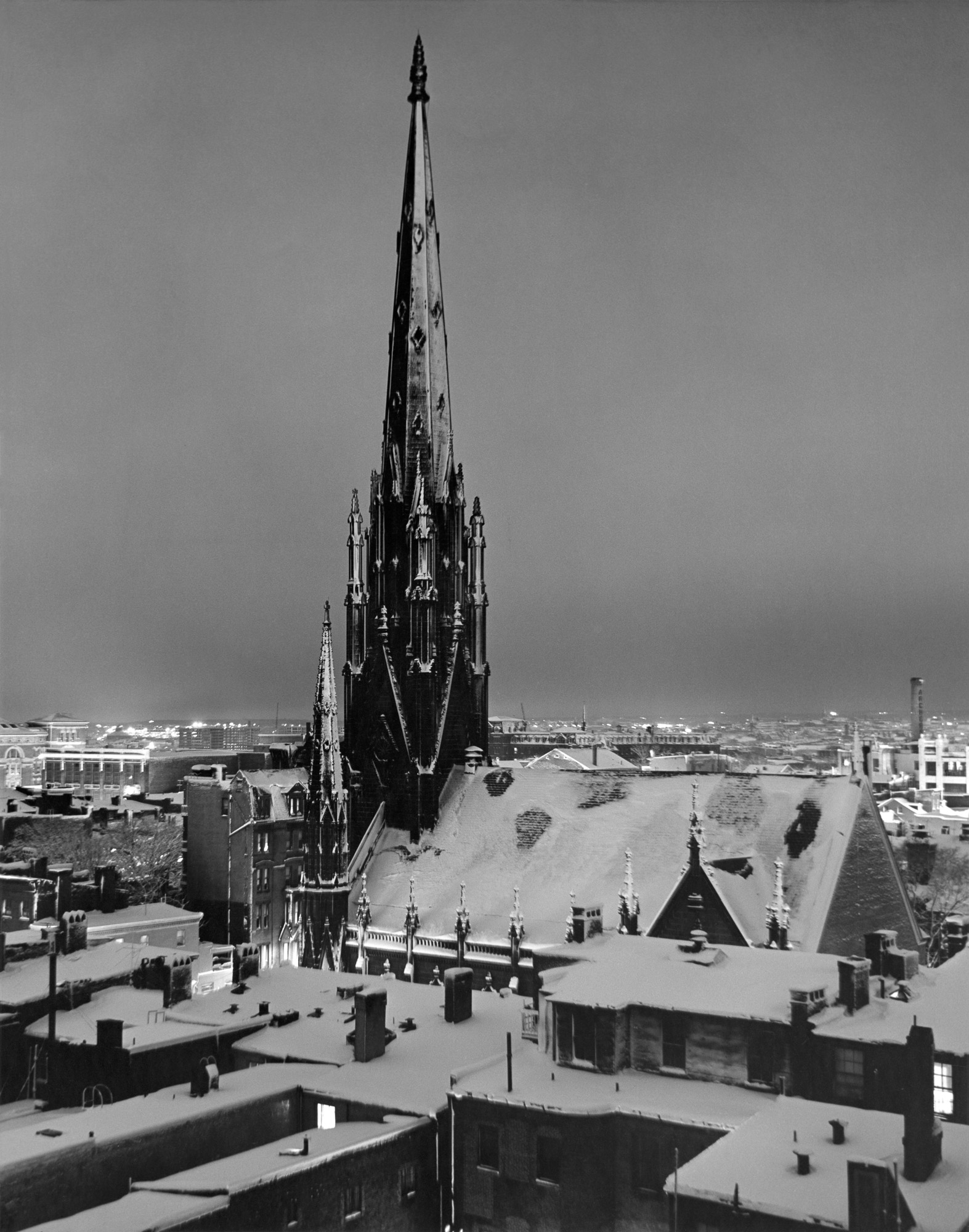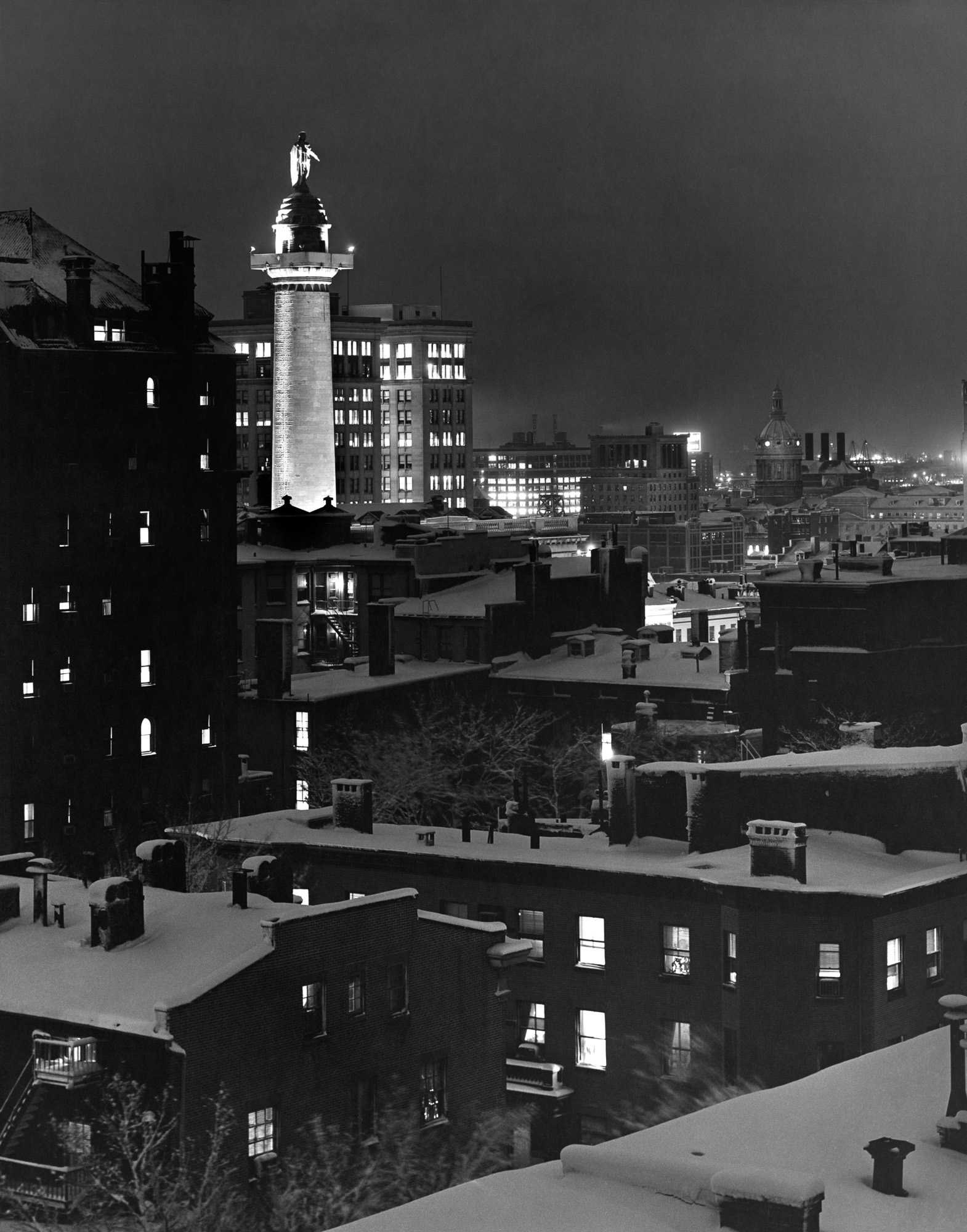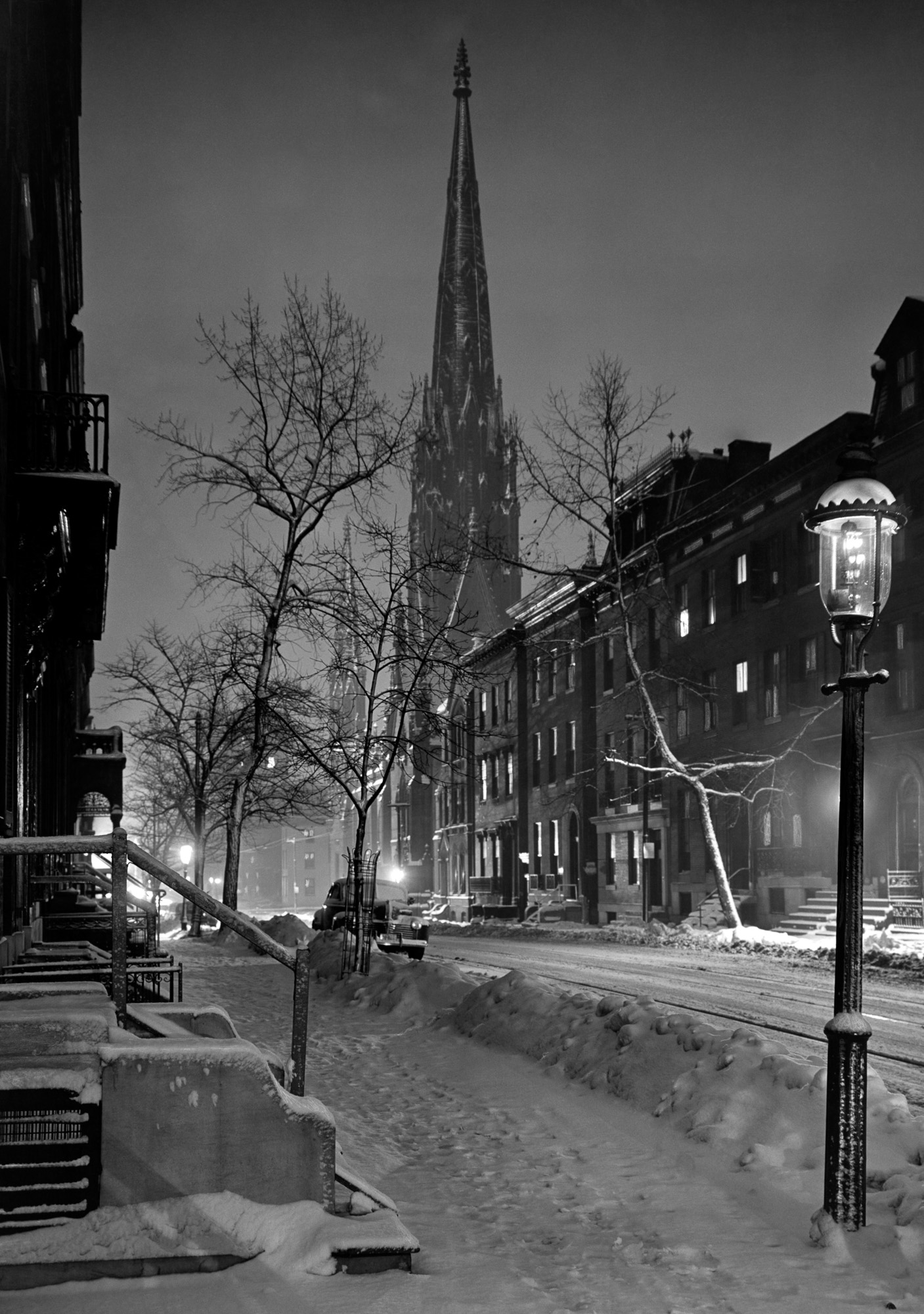Analyzing classic photographs can be an effective way to progress in one’s own work. The key is not to simply mimic someone else’s great ideas, but to use the knowledge that comes with reproducing the work of masters and move on to create something new. With this in mind, National Parks at Night's Lance Keimig offers this ongoing Muses from the Past series highlighting some of the early masters of night photography. We'd love to see any photographs you create after learning more about the pioneers of this niche—please share in the comments section!
I’ve been truly fortunate to be able to be both self-employed and to do work that I love for the last 30 years. Still, the goal that I set for myself to make a living exclusively as a night photographer eluded me until about ten years ago. With the exception of teaching night photography workshops, there have been relatively few times when I have been hired specifically for my night photography skill set.
I chose the specialty of architectural photography early in my career as I saw that as one of the best opportunities to shoot at night professionally. A few such assignments did come my way, but for the most part I was hired to shoot commercial interiors and institutional spaces. My fine art night work was carried by one of the better Boston art galleries until they closed, and as a result my work has been added to both corporate and institutional collections. For a number of years while living in Massachusetts, I worked with an art consultant who appreciated my vision, and she worked hard to convince clients that they needed night photographs hanging on their walls.
Very early in my career, way back in 1990, I almost sold a self-assigned project of images of the Port of Stockton in California. I had worked for a couple of months just to gain access to the property to photograph after hours, and eventually had a body of work that I was happy with. When I sent a selection of prints to my contact at the port, she was very enthusiastic and wanted to use them in their upcoming annual report.
Port of Stockton, California. This is about a 15-minute exposure on medium format Fuji color negative film, made by moonlight and mixed artificial lights in 1991. The combination of strange architecture and mixed lighting made for a surreal scene. The camera, lens and exposure are long forgotten, as there was no EXIF data in the nights of yore.
Had it come to pass, it would have been the brightest feather in my cap to date, but the CEO put the kibosh on the project. He rightly understood that the dark and mysterious images I made of his property did not reflect a vibrant and busy facility that moved tons of freight and cargo every day. My photographs did not convey the message that needed to be communicated by the report. I was disappointed, but he made the right decision––even if I didn’t appreciate it at the time.
But this post is not about me or my work. It’s about one of the more interesting night photography projects ever undertaken. Unlike my unpublished Port of Stockton photos, Rincones Del Viejo Madrid: Nocturnos was published as a book of night photographs. The images were made by Alfonso Garcia Sanchez and his two sons in 1950 and 1951.
A little background history is required to place this work in context, and to show why it was so ill-conceived.
Madrid in a Good Light, at Night
Spain was essentially a fascist dictatorship after Francisco Franco took power during the Spanish Civil War in 1936. Although the country officially claimed neutrality during World War II, it really supported the axis powers, and as a result it was politically and economically isolated at the end of the war.
The autarkic Falangist movement that dominated Spanish politics in the 1940s eventually yielded to a less isolationist faction within Franco’s inner circle as Spain looked to join the young United Nations and to be welcomed back to the world stage.
One effort toward that goal was a multipronged publicity campaign to polish Spain’s tarnished image, and the extravagantly printed book of photographs titled Rincones Del Viejo Madrid: Nocturnos was one of many such projects offered to dispel the notion that Spain was a dangerous place (a perception that came about largely as a result of the historical memory of Spain’s swashbuckling past, the Spanish Civil War and Franco’s cozy relationship with Germany and Italy during the war) and to instead show what a warm and welcoming place it truly was.
“Plazuela De La Morería—In the heart of old Madrid. It owes its name to the fact of having been the dwelling place of the Moors at the time of the conquest by the Christians. It was generally believed that the Spaniards expelled all of the Moorish inhabitants as they conquered one town after another. This is not so. After the conquest, Arabs and Christians lived together. The historical truth is that when the latter took Madrid, they fixed, in their generosity definite spaces for the former to live in.” (Rincones Del Viejo Madrid: Nocturnos)
The book shows romanticized scenes of quiet plazas and passageways of the Moorish Quarter, the oldest part of the city, lit by gaslights at night. The streets are mostly deserted, and the few human figures that populate the scenes are shadowy and mysterious. The photos are likewise moody, dark and ominous, and they are full of atmosphere. One thing they are not is welcoming. The scenes presented on the pages of this handsome and expensively produced volume would be more fitting illustrations to a murder mystery novel than to a tourist board promotion.
Each of the 41 images has a description of the location where the photo was taken in both Spanish and English. It’s doubtful that the book made much of an impact on international relations, and although Alfonso, as he was known, is one of the more important Spanish photographers of the time, he is not widely known for this work.
“Calle Del Cordon—This is one of the most felicitous hits of portraying the night in the venerable nooks, in old Madrid. The narrowness of the streets causes the buildings to look higher and weighed deeper down with mystery. It seems as if a curtain were raised behind which we perceive the decoration of fairy tales, of legend, and adventure.” (Rincones Del Viejo Madrid: Nocturnos)
In 2009 I had a conversation with photo historian Gerardo F. Kurtz, who introduced me to both Alfonso and the book. Unfortunately I’ve not been able to discover much else about this obscure publication since then, and only recently did I find an excellent copy online through AbeBooks.
Gerardo is one of the preeminent historians of photography history on the Iberian peninsula, and my email conversation with him was fascinating and revelatory in multiple ways on multiple topics. I’m excerpting a few of his thoughts on Rincones here in an attempt to convey both the motivation of the photographers and how the publication came to be.
Gerardo wrote to me:
“This production must have been conceived (and produced) in context of the then-just-developing forces that were behind the promotion of the city of Madrid as a tourist place, as a modern city and as a safe one. What this book states in that context of dangerous Madrid is obviously lost in our understanding, but the myths of nocturnal danger of Madrid—romantic views of the sword fights and of criminal violence—were certainly strong and had a good grip on collective understanding (misunderstanding one might better say).
“The general visual aesthetics of the whole book, not just of the images themselves, is clearly in tune with the rest of all the ‘official’ material produced in that period. In any case, this production is clearly not an outsider to its time and environment—it is far from something coming from the atelier of an artist trying to put forward his own vision. His vision is there, of course, but here one could hardly suspect it being the key issue put forward with the book.
“There has been, to my understanding, very little effort to understand the factors and prevailing views of the artists—like Alfonso—who worked during this peculiar period of time called the ‘el franquismo.’ My untrained view is that there was lots of talent involved in the propaganda efforts and that the regime was in fact very aware of the need to use and promote good talent, but alas, tuning it and putting it to the service of a social reality, at least more to a social reality than to a political one.
“Most now want to see only the political and perverse side of it all, and this has deeply distorted the understanding of the historical reality of that time. In any case, I have always understood Alfonso as one of those talented artists, phased into the scene, if not a direct part of it.
“His Nocturnos would be the typical material put at the service of an editorial idea, and his technical skills (here he is certainly bragging and telling us that photographically ‘it can be done’) were brought out to everyone’s view, but his images could still be understood as something produced by him as a free and talented artist. A complicated combination and a complicated issue.”
Alfonso’s Photos
Alfonso was an accomplished commercial photographer who as far as we know was not politically motivated, but who eagerly accepted this assignment as both a well-paying job and as a way to show off his photographic prowess in a technically challenging assignment. Photographic technology had advanced considerably in the 1940s, with new emulsions and new optics making night photography more accessible and good results more attainable than in the past.
“Calle Del Codo—In the background, The Plaza de la Villa. In the foreground, the house with the historical tower of Lujanes. The ground where the narrow lane is situated, belonged to the Vargas, who were knights in the town. The shape of the street is exactly like an elbow. The name was given by the Marquis of Grafal, Magistrate of Madrid.” (Rincones Del Viejo Madrid: Nocturnos)
Sancehz is not known to have made other significant night images, nor to be someone who was passionate about the aesthetic possibilities of night photography. The images are somewhat repetitive and not highly creative, but they are extremely well-executed and show remarkable control of the high-contrast scenes of his subjects. He often included streetlights in the images, and the level of detail in both the highlights and shadows reveals that he must have worked hard to create a strategy of exposing and developing his film for maximum detail.
To someone without firsthand knowledge of film-based photography, the images are probably not very exciting, but for the time when they were made, these photographs were quite the technical achievement.
“San Pedro El Viejo, Bajo La Escarcha De Enero—Behind the railing of Santisteban at the end of the Nuncio Street, there stands the church of san Pedro the Old with its proud tower. It is the oldest of the temples in Madrid among those of which have held through the course of times the devotion of the Madrid people. On the side of the Evangel in a chapel by itself lie the remains of the noble family of the Lujanes.” (Rincones Del Viejo Madrid: Nocturnos)
When placed into context of other thematic bodies of night photography from the 1930s through the 1950s––the work of Brassai, Harold Burdekin and John Morrison, Bill Brandt, Volkmar Kurt Wentzell and O. Winston Link—Alfonso’s Rincones Del Viejo Madrid stands out as an important project, as an early example of commissioned night photography as opposed to a personal project, as a historical record of an interesting chapter of Madrid’s history, and as a superb technical accomplishment in night photography.
Connecting with the Past
As I look back on my own career and at varied attempts to find paid night photography assignments alongside simultaneous self-assigned passion projects, I can’t help but think of the mixed emotions Alfonso may have felt at being hired for the Rincones project. It was clearly a posh assignment, and one that allowed him some creative expression and to showcase his technical expertise. On the other hand, it was work for hire to promote a political agenda, and we’ll never know if that bothered him or if it never even crossed his mind.
We are lucky that the work survives in an extravagantly produced goat-leather bound book with marbled endpapers and with high-quality photogravure printing. I’m quite fortunate to have been able to acquire my own copy of this rare book and to have had the privilege to learn about its history from Gerardo. I hope that you as well enjoy both the images and the history.
“Calle del Rollo—The lower part of this street, at the back of that of the Conde de Revillagigedo, was named Calle de la Parra (Vine Street). It was famous in the time of the Master Juan Lopez, professor of studies, in the town. He was fined for not hindering or punishing his pupils who stole the grapes from a vine. Vexed because of the fines and warnings, he kept in prison for three days, Miguel de Cevantes, who was the perpetrator of the scaling of the walls and the stealing of the grapes.” (Rincones Del Viejo Madrid: Nocturnos)
I’m always on the lookout for historical examples of night photography, especially by lesser or unknown photographers. The images of Brassai, Brandt and Link are well-known and widely published, but the discovery of the fascinating work of artists such as the Vargas Brothers, Burdekin and Morrison, and Alfonso broaden and expand our understanding of night photography as an oeuvre.
How many more glass plate masterpieces lay waiting to be discovered in dusty wooden crates hidden away in long-forgotten attics? Surely there were early photographers outside of Europe and America who found a passion for photographing by moonlight or streetlight, but whose work has never been seen. I’m still searching, and will report back to you with more Muses from the Past.











